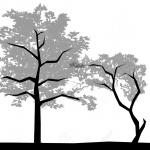This article tries to transcribe, in theory and in practice, our experience of selfbow making (wooden massive bows, sometime called « primitive bows »). We’ll here describe with most possible details the various choices as the bowyer and the consequences on the bow, its performances, resistance, form…
(here is a first translation to make the french text readable by more people. Sorry for my bad english! Parts of the text, images and links will stay in French. Use Google Chrome for machine translation if necessary ).
We will describe the different stages of bowmaking in chronological order … the choice of the tree to the finishes. However, some steps may be inverted (drying, for example) which can sometimes change the final appearance of the bow. This is however, in our view, the ideal order to make a bow or simply the order we prefer.
We’ll structure each stage by describing first the more theoretical questions and ends with some pictures of the construction of the two arcs described in the previous article more succinctly (in french). We’ll concerve the same titles to facilitate the parallel between the two different documents.
We’ll start from the same trunk, we will cut it in half to make one side a medieval longbow (English style) and the other a prehistoric flatbow (type Holmegaard).
We will use mainly medieval tools (drawknife), but modern tools (electric) or prehistoric (flint) can also be used too…
It can also be helpful to remember the different forms of traditional bows (in french) and performances (in french) to better understand this text.
The purpose of this document is therefore to share our experiences in bow making. Other people will be able to proceed differently with the same results.
However, we must put attention there are many views or « myths » about bow making. Far from us to say that others are wrong, but simply we proceed in this way.
Also, we like to try and make our own idea … So make your own opinion by trying bowmaking bu yourself… even if you start making firewood!
A reader has informed us that it might be useful to separate the realization of flatbows and longbows. However, as 95% of the explanations are common to both types of bows, we have put in green passages about longbows and in purple flatbows (black which is common). In this way, the reader can choose to read the information which appears most useful, and we will highlight the differences between these two types of bows.
We hope this text will provide answers and open the way to some successful attempts by the reader …
1- Choosing the wood
RETURN
